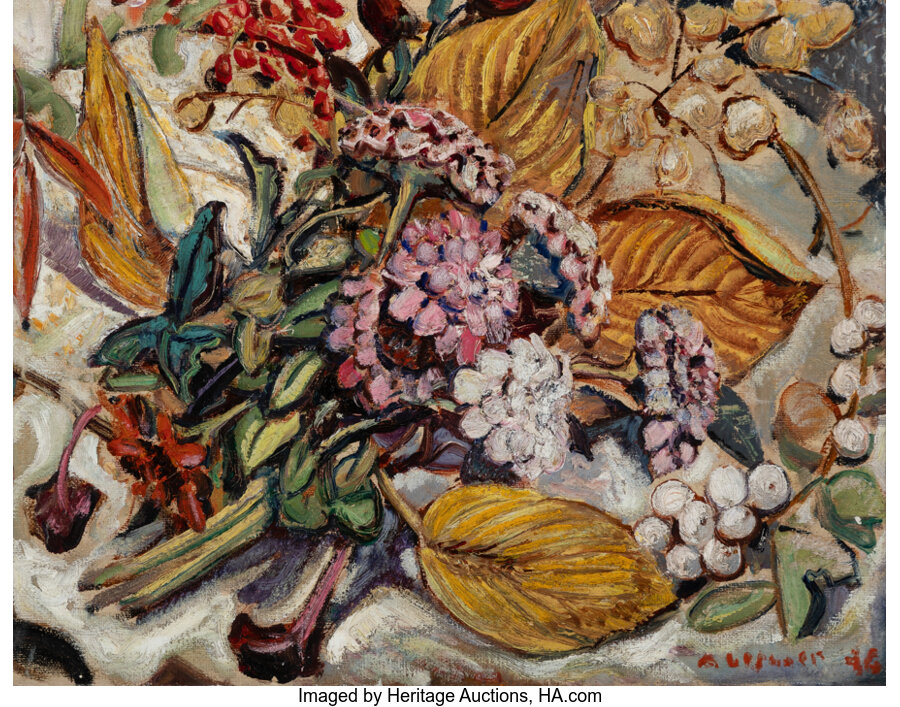Arthur Lismer (Canadian, 1885-1969) Dead Flowers, 1946 Oil on canvas 14 x 18 inches (35.6 x 45.7 cm) Signed and dated lower right: A. Lismer 46 Signed, dated, and titled on label affixed to the reverse: Dead Flowers / 1946 / Arthur Lismer PROVENANCE: The artist; Art Gallery of Toronto, Canada; Mrs. A.S. Keiller, acquired from the above; By descent to the present owner from the above. EXHIBITED: Art Gallery of Toronto, Canada, "Arthur Lismer," 1950, no. 49. LITERATURE: Art Gallery of Toronto, Canada, Arthur Lismer, exhibition catalogue, 1950, p. 31, no. 49. Arthur Lismer was among the founding members of the Canadian Group of Seven. This community of landscape painters established themselves in 1919 and included Franklin Carmichael, Lawren Harris, A.Y. Jackson, Frank Johnston, J.E.H. MacDonald and Frederick Varley. According to Lawren Harris, the Group of Seven "were drawn together to initiate an art movement to paint the Canadian scene in its own terms . . . They essayed to paint this country on accord with the dictates of its own character and spirit" (Arthur Lismer, Art Gallery of Toronto, Canada, exhibition catalogue, 1950, p. 7). In the following decades, after achieving critical acclaim as the country's leading nationalist artistic movement, the original Group of Seven was disbanded in 1932 following the death of its member J.E.H. MacDonald. The next year, in 1933, a new association of artists was created and expanded to include new members who renamed themselves the The Canadian Group of Painters. Lismer's contributions to the Group of Seven included a large volume of sketches and paintings that meticulously documented elements of the Canadian landscape from each unique location. He produced countless watercolors and sketches while on expeditions with fellow group members across the Canadian territories of Quebec and Ontario. These sketches carefully documented the environs of Lake Superior, McGregor Bay, Georgian Bay and Bon Echo Park. Lawren Harris wrote of Lismer, "His response to great nature in her elemental and dramatic moods . . . evoked his sense of form, rhythm and picture organization and gave his paintings a substance and structure that is at once profound, resonant and full-bodied" (ibid, p. 9). This spirit is no more evident than in the present lot, Dead Flowers. There is a devotional quality to the floral arrangement Lismer lays in front of the viewer – it is a splendid field of contrasting form and rich in earthy color. While the bouquet presented has begun to decompose, Lismer still manages to breathe new life into its final days. Harris continued, "[Lismer] claims he is earthbound. If so it must be in the sense he paints the realities of the earth as men known them, objectively and by constructive standards; and that his idealism ever seeks practical channels of usefulness" (ibid). HID12401132022 © 2024 Heritage Auctions | All Rights Reserved www.HA.com/TexasAuctioneerLicenseNotice



